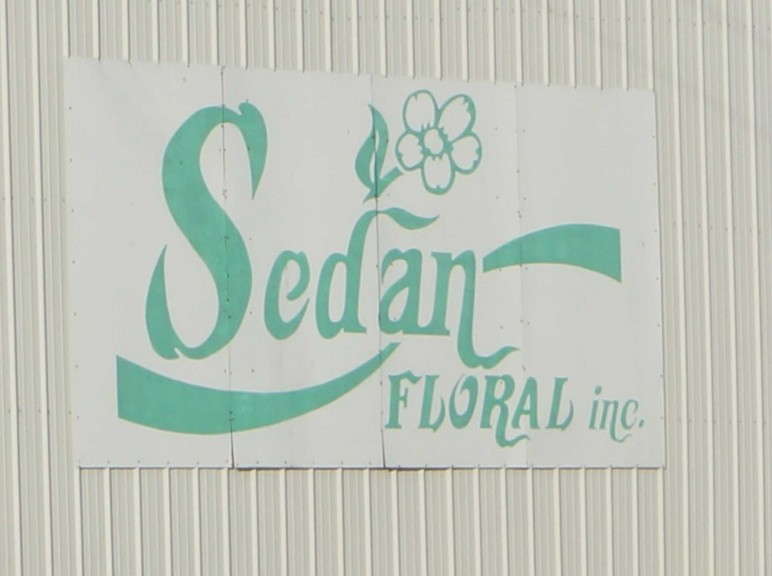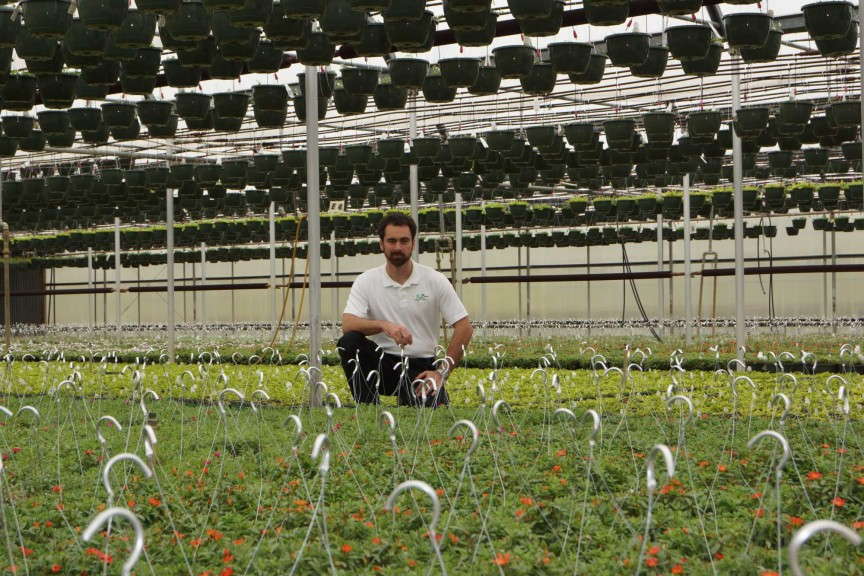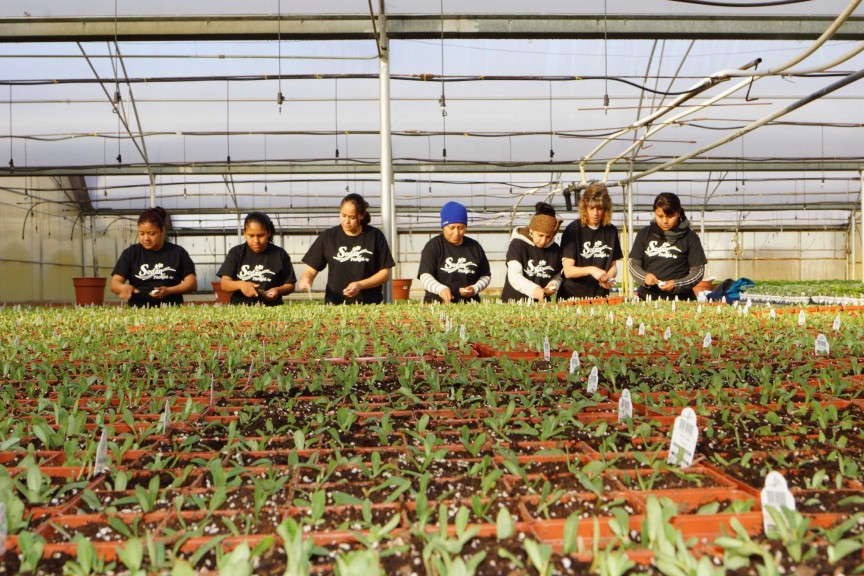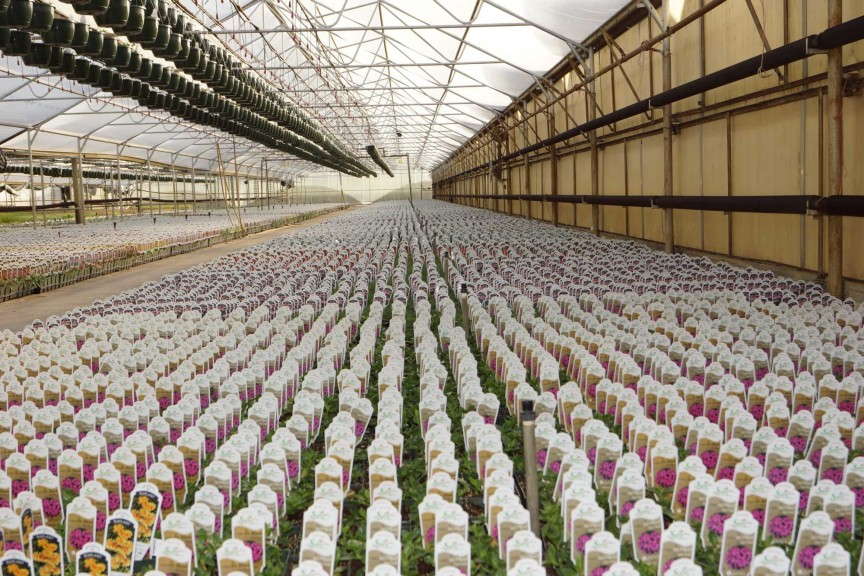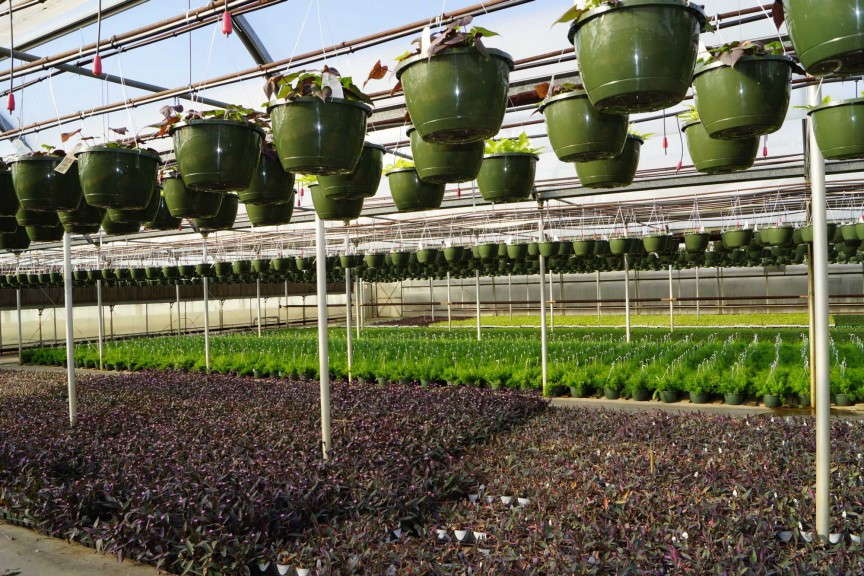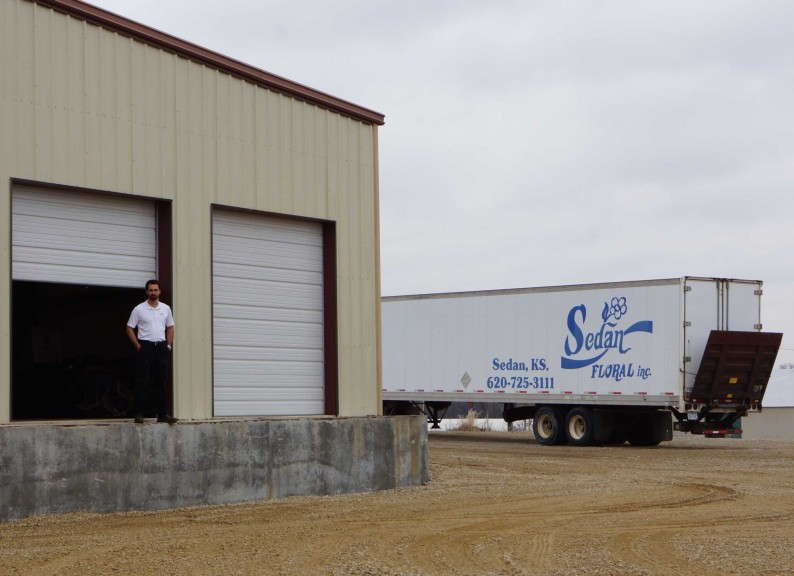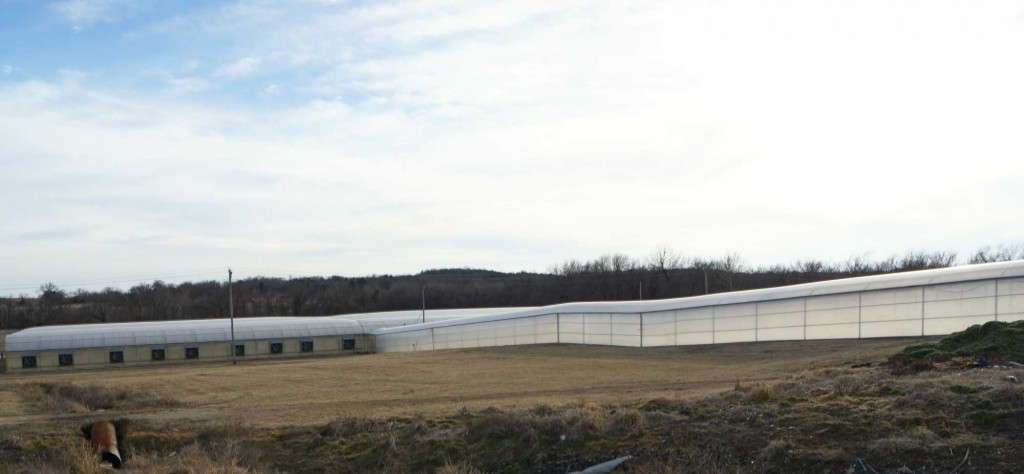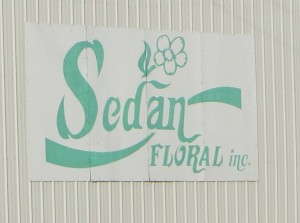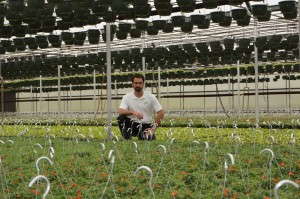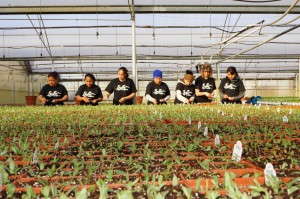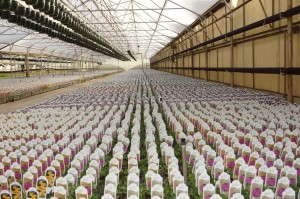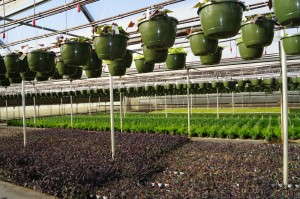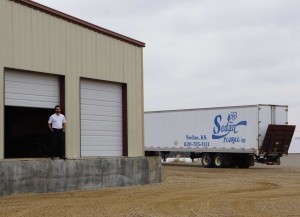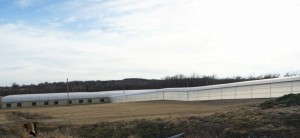Sedan Floral Rebuilds A Customer Base From Scratch
 The history of Sedan Floral is a cautionary tale followed by a growing success story. The family operation started in the 1940s and built a solid business with independent retailers. By the end of the 1970s, the Sedan, Kan., wholesaler began shifting production to service chain store customers and, riding the wave of the ’80s and ’90s, it grew the business tenfold.
The history of Sedan Floral is a cautionary tale followed by a growing success story. The family operation started in the 1940s and built a solid business with independent retailers. By the end of the 1970s, the Sedan, Kan., wholesaler began shifting production to service chain store customers and, riding the wave of the ’80s and ’90s, it grew the business tenfold.
Then, even more quickly than it rose, Sedan Floral fell.
The path it has taken back to profitability over the last decade — equal parts advance planning, difficult decisions and creativity in the face of limited options — is instructive for greenhouse growers everywhere as they maneuver through today’s market.
The Rise And Fall Of Sedan Floral
For its first 30 years, Sedan Floral sold exclusively to hundreds of independent garden centers. In the early 1980s, however, the greenhouse got some business from Atwoods (a regional hardware chain) and some smaller grocery stores. By the late ’80s, Builders Square and Kmart were buying from Sedan. That growth with the chain stores accelerated over the next decade and a half.
“You could just add a zero to everything we did,” says current President and CEO Jonathan Cude, who grew up in the family business and came back full time in 2007. “Where we did 1,000 hanging baskets, now all of a sudden we were doing 10,000 hanging baskets. It didn’t happen overnight but the growth in the 1980s and ’90s was unbelievable.”
One incident during that period, however, foreshadowed the challenges the operation would face with its new business model. Having expanded facilities to the limit in its original location in Sedan, owner Gary Cude built 4½ acres of greenhouse 30 miles away in Independence, Kan., largely to serve increased business from Builders Square. Within three years, Builders Square changed vendors and took the business elsewhere.
Fortunately for Sedan, Kmart called a few weeks later to increase its business from 13 stores to 35 and picked up some of that production.
“We were in big-time trouble and then, boom, the next day here was a new opportunity to go forward.But that was always kind of in the back of our minds — we just spent $1.5 million on a facility for a customer and then they were gone. You sort of filed that away,” Cude says.
[blackoutgallery id=”56407″]
The growth with Kmart and Atwoods continued unabated for more than a decade. Then it all came apart in just two years.
Sedan’s Kmart business had expanded over time to include the chain’s locations throughout Kansas, Oklahoma, Arkansas, most of Missouri and Memphis, Tenn., as well as some in Iowa, Nebraska and South Dakota during peak season. The retailer accounted for more than 50 percent of Sedan’s business. Then, in 2002, Kmart filed bankruptcy.
The chain remained a customer, but at a much-reduced level. In 2003, Kmart unveiled a pay-by-scan model, further impacting Sedan’s bottom line.
The Atwoods business, which had grown to more than 20 stores by this time, accounted for 25 percent of Sedan’s production. But in 2003, the retailer brought in a new buyer who decided to take almost all of the business to another grower in ’04.
Over the next four years, things didn’t get much better. Promised business that never materialized, inconsistent orders from customers and an unsuccessful attempt at contract growing all led Cude to an inescapable conclusion for the 2008 season: He needed to cut production to levels they could reasonably expect to sell to the existing customer base.
“We just started scaling everything back,” he says. “We cut production back to about 40 percent of our peak levels.”
Under many circumstances, a loss like that could spell the end of a greenhouse business. Sedan Floral has survived and recovered. Cude doesn’t recommend voluntarily making some of the changes he’s had to make, but they’re a good example of what a grower can accomplish when disaster strikes and he still has the desire to keep going.
Two Steps Toward Financial Preparation
The foundation for Sedan’s resurrection was actually laid with two decisions by Jonathan’s father — Sedan owner Gary Cude — long before the Kmart bankruptcy.
“The $1 six-pack landed on the industry back around 2000. The chain stores got into a gigantic pricing war and we went from $1.25 to a $1.05 on six packs overnight,” Jonathan says.
Kmart balanced the pricing hit with volume by increasing the number of stores Sedan Floral supplied. It was clear, however, what impact changes like that could have on an operation with so much production tied up in one or two customers.
“Gary said, ‘We have to get out from under this. One customer can’t be more than 50 percent of our sales. We have to find other outlets.’ Unfortunately, we had a hard time changing,” Cude says.
The tactic took far longer to accomplish than anyone hoped, but ultimately, it was a primary factor in Sedan’s recovery.
The second tactic — creating a rainy day cash reserve — was also critical.
“For a lot of big growers, the bank plays a large role in their business decisions. Gary always had a philosophy of not getting over-leveraged,” Cude says. “By the late ’80s, we had basically paid off everything and were self-financing. We grew at a slower pace than others that were maybe more heavily leveraged, but we never had any major debt.”
Gary Cude used that financial flexibility to build a cash reserve. At that point, sales, margins and profits were still riding high and the operation was able to set aside $4 million by the time it was needed.
“That capital carried us through the really tough time. Had we had debt or had no capital in reserve, we never would have made it,” Jonathan says.
How To Rebuild A Customer Base
The next step in Sedan’s recovery was getting serious about finding more customers. Cude hit the road to make sales calls for the 2008 season.
At this point, the operation’s customer base was basically the remnants of the Kmart business and a variable list of garden centers. After years of focusing heavily on its large chain accounts, Sedan was often the third or fourth grower the smaller garden centers would call.
“We had a customer base with independent garden centers, but there was no year-over-year consistency. A garden center might spend $10,000 one year and $2,000 the next,” he says.
Cude identified 25 garden centers and hardware stores that were buying from Sedan on a semi-routine basis and seemed to offer potential for growth.
“We literally started with almost nothing,” he says. “In 2008, we had that core group, kept it and grew it. In 2009, we kept the bigger group and added to it. That’s been the process. Find the customers and show them you can do what it takes to earn their business and make their business grow. Don’t worry about finding a whole bunch of new customers until you can take good care of the ones you have.”
“We’ve Changed Everything”
Taking care of those customers meant rethinking everything about the business.
“Since the start of 2008, we’ve literally changed everything. The size of our flat, the plants we grow, the colors we grow. We’ve changed the tagging, the way we ship and the time it takes to ship an order — all basically out of necessity,” Cude says.
“I took everything I knew about Sedan Floral — the margins, the sales volume, the customer base — set it aside, and said, ‘I don’t know that anymore.’ What I do know is I have a greenhouse and there are people out there I want to sell to. That’s the new reality.”
Finding the right answers to help Sedan sell to new customers started with a lot of conversations with independent retailers.
“I was watching Donald Trump on TV once, and he said, ‘It’s easier to sell what the customer wants to buy,’” Cude says. Garden centers don’t want something that looks like it’s for a chain store. Rather than take what we have and try to force customers to buy it, I went to customers and said, ‘What do you want to buy?’”
Cude heard a a broad assortment of answers about products and sizes and colors.
“We took the collective opinions of all of these garden centers and found the similarities. That’s what we started bringing to the marketplace,” he says.
In one case, Cude let a single independent retailer pick every line item for Sedan’s 4-inch annual program. That might seem crazy, but from his perspective, there was little to lose and a lot to gain.
“The year before, we dumped nearly 80 percent of our 4-inch annuals. The program was a dud,” he says. “This retailer was one of the biggest garden centers in Oklahoma. They had a TV show every Saturday morning promoting their varieties. Won’t everyone else want those varieties, too?”
In the end, that’s exactly what happened. Sedan’s sales in the category increased by 10 times the first year.
“We went from a tiny number to a not-so-tiny number, but it was a phenomenal increase for us,” Cude says. “We tried to get more independent retail customers for eight years before we figured it out. We failed because we always tried to get the customers to buy what we were producing. When we started producing what they wanted to buy, stuff started changing. There’s no secret formula, we should all know that. But that’s where it changed for us.”
Adapting To A New Reality
As Sedan Floral heads into 2014, it remains a family business. Jonathan has been joined by his brother, Jeremy, who oversees growing among other duties and by his mother Kathy, a former Syngenta sales rep who leads sales and production planning. His father Gary remains active, as well.
Production is back to around 70 percent of its peak a decade ago. No single customer is larger than 6 to 7 percent of the operation’s total sales. That steady, deliberate pace is fine with Cude.
“My goal is to be as big as we need to be,” he says. “If we can continue to add customers and take care of them in the way we’re currently servicing them with our current quality, I don’t care if we’re 5 acres or 500 acres. I don’t want to grow to a position that we start getting sloppy. As long as we adhere to the business model that’s in place, we’re fine. We are profitable at the level of sales we have.”
Margins, top-line sales and profit dollars aren’t what they were in 2000, but Cude is learning to forget about all of that and deal with the market as it is.
“The big margins, big money, big payout, big everything aren’t a part of reality for us anymore,” he says. “This is the new reality and it’s not that bad. We’re making money. We’re investing in our company. We’re growing our company.”
Can other growers who find themselves in a similar position have an equally successful transition to a new model and customer base? Cude says it’s incredibly hard work, but it can be done.
“If the current business model you’re using fails to work, be willing to stop, press reset on your brain, erase everything and start over,” he says. “Build a new idea from the ground up. If it’s successful, don’t let it go. If you have a definition of quality you want to hold, hold it. Don’t retreat for the sake of gaining more business or cutting costs.”
“Be open to change,” Cude says. “It’s cliché. Everybody says it. But that’s what we did. And it’s working.”
3 Steps To Avoiding Disaster
Sedan Floral’s second act — abandoning its chain store model and reinventing itself to service primarily independent retailers — is impressive. But it’s a story that was written almost out of desperation. President/CEO Jonathan Cude offers three lessons he and his business have learned that may help other growers avoid the problems Sedan faced.
1. Prepare for the worst. Where possible, build a reserve of funds you can tap to carry you through the loss of a major customer or customers.
2. Spread your risk. There are exceptions, of course, but most growers will benefit from a variety of customers, product categories and market regions.
3. Be open to change. If you don’t see a clear path to long-term success with your business model, be willing to set aside years of history and adjust to one that will. As business conditions and customers change over time, operations need to grow and evolve to survive.




